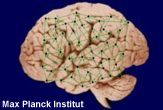Electrical Properties of Human Skull Finally Determined

The brain and skull have a lot in common with latex and toothpaste, at least when it comes to electrical conductivity, scientists now find.
The discovery could factor into efforts to diagnose and monitor epilepsy, comas and other disorders as well as researching brain activity.
Knowing how conductive the brain and skull are is key to techniques commonly used to scan brain activity. While research has pinned down the brain's conductivity, exactly how conductive the skull is in a living head has for years remained surprisingly controversial.
Scientists know the brain is more conductive than the skull because the brain does, after all, hold billions of electrically conductive brain cells. Old data used for 30 years estimated the brain was 80 times more conductive than the skull, which is about how much more conductive liquid latex is than crushed cranberries, explained biomedical engineer Bin He at the University of Minnesota. One of the more recent experiments suggest the brain is 25 times more conductive than the skull, which is about how much more conductive latex fluid is than New York City water, He explained.
The electrical conductivity of liquid latex is roughly 1,750 microsiemens per centimeter—hundreds of millions of times less conductive than copper, which is rated at 580 billion microsiemens per centimeter.
To help settle how conductive the skull is, He and his colleagues investigated two children undergoing possible surgery for epilepsy. Beforehand, doctors at times identify the specific brain areas responsible for seizures with electrodes placed deep into the brain. At the same time, in the new study, the doctors measured the brain activity of the children from the outside using electrodes on their scalps.
Computer models built of their heads based off nearly 50 sets of electrical measurements found the brain is only about 18.7 times more conductive than the skull, or about how much more conductive latex fluid is than toothpaste, He told LiveScience. The findings offer "the possibility of much accurate surgical outcomes" in the brain in the future, He added.
Sign up for the Live Science daily newsletter now
Get the world’s most fascinating discoveries delivered straight to your inbox.
The work was detailed earlier this month online by the journal Applied Physics Letters.
- Top 10 Mysteries of the Mind
- Human Nature: What We Learned in 2006
- Adult Brain Cells Do Keep Growing
- All About the Brain










